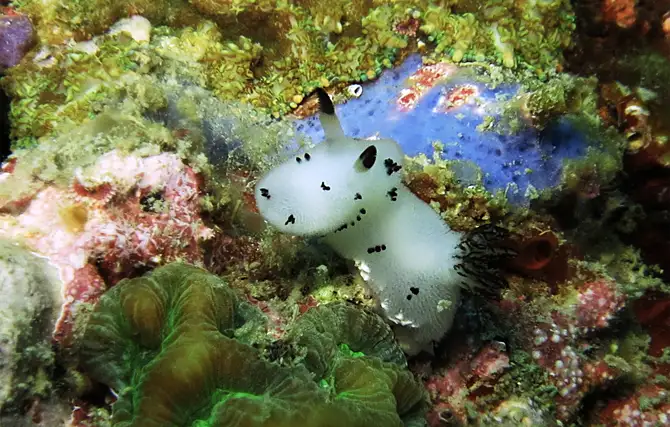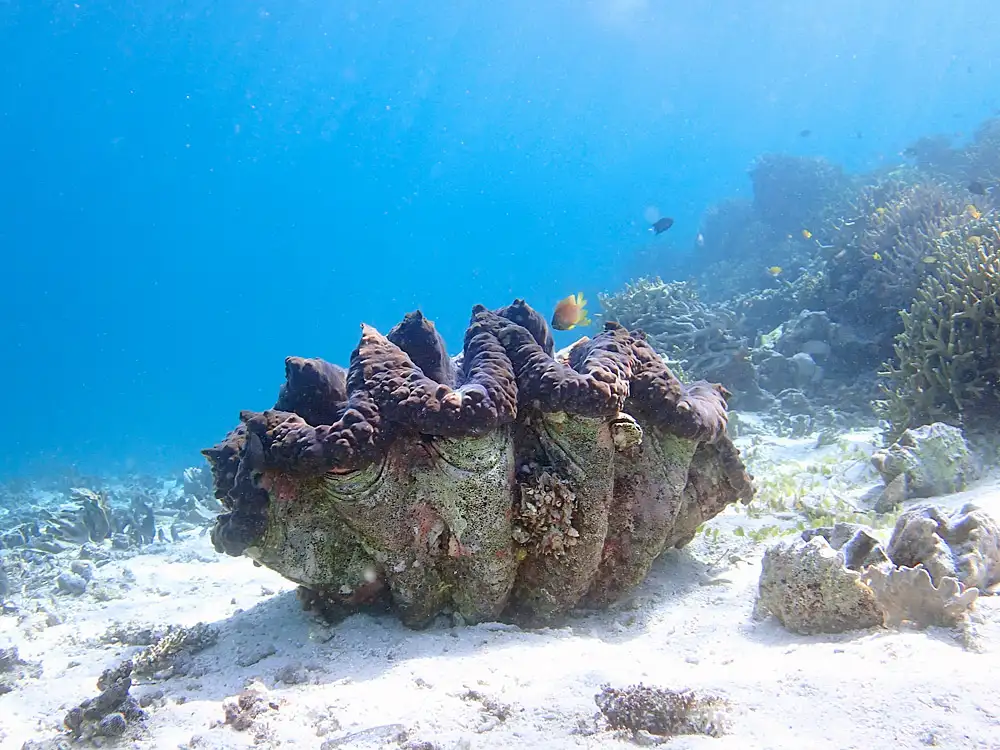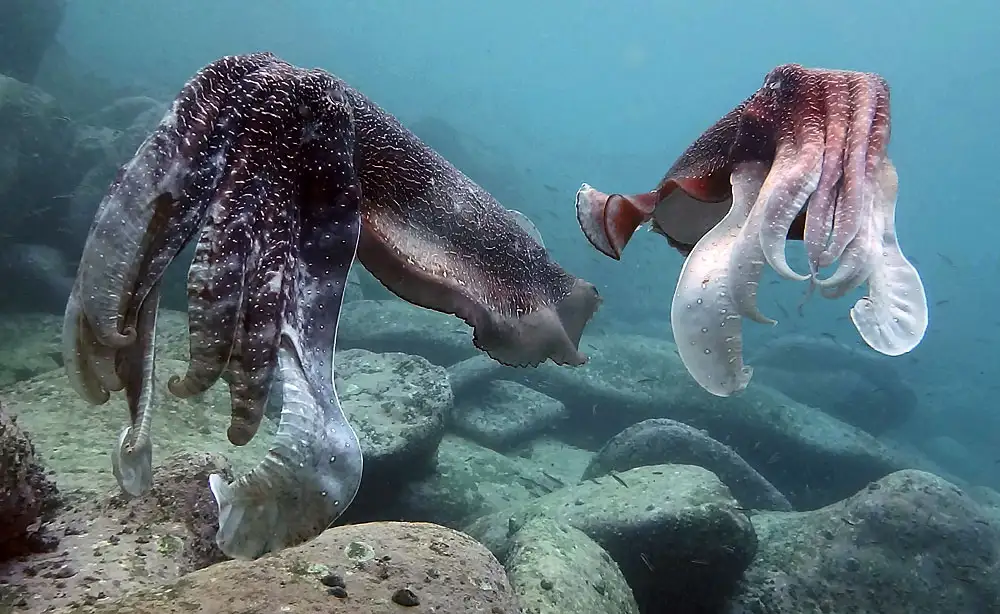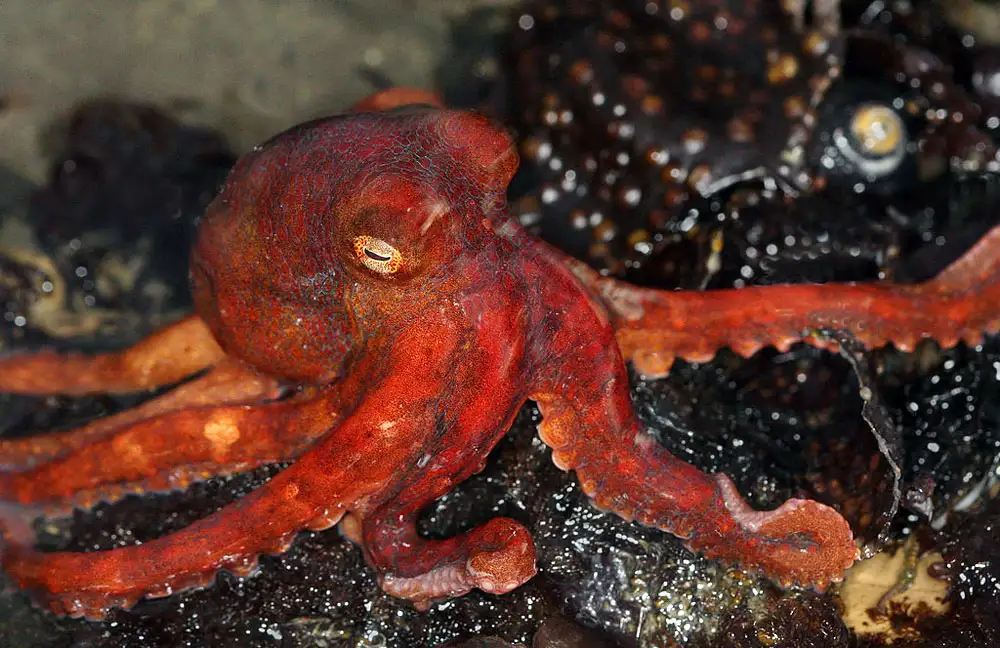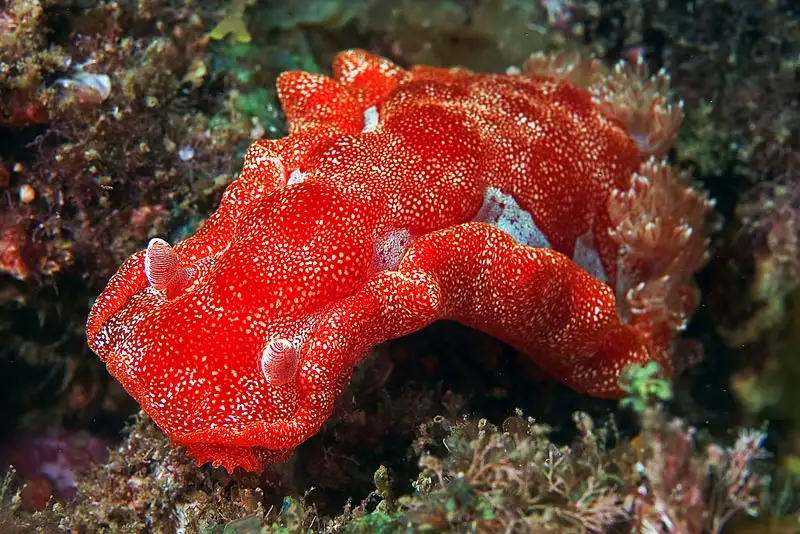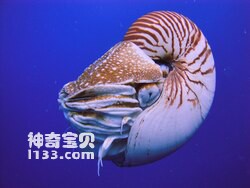Jorunna funebris (Dotted Nudibranch)
IUCN
LCBasic Information
Scientific classification
- name:Jorunna funebris (Dotted Nudibranch)
- Scientific Name:Jorunna funebris
- Outline:Mollusca
- Family:Discodorididae Jorunna
Vital signs
- length:Commonly 4–7 cm; large to ~10 cm
- Weight:Not standardized (small dorid nudibranch)
- lifetime:Months to ~1–2 years (environment‑dependent)
Feature
White mantle with black rings; dark rhinophores & gills; caryophyllidia on dorsum; sponge‑feeder; hermaphrodite with ribbon eggs.
Distribution and Habitat
Tropical Indo‑Pacific reefs/slopes/lagoons (1–25+ m), sponge‑rich areas.
Appearance
Oval, flattened, rough dorsum; distinctive black rings/spots; dark sensory rhinophores and gill plume.
Details
Jorunna funebris, often called the dotted (Dalmatian) nudibranch, is a dorid sea slug in familyDiscodorididae. The mantle is covered with dense caryophyllidia (spicule‑bearing tubercles) and shows a distinctive white background with black rings/spots. Rhinophores and gill plume are typically dark.
Ecology & Biology
Diet: sponge‑feeding (reports include Haliclona spp. among others); dietary chemicals may confer deterrence.
Behaviour: slow crawler on reef surfaces; secretes mucus and withdraws when disturbed.
Reproduction: a simultaneous hermaphrodite; lateral copulation and deposition of a ribbon‑like egg mass on hard substrates.
Identification
Oval, flattened body with a rough dorsum of caryophyllidia; several to many black rings/spots on a white mantle.Rhinophores and branchial plume are dark brown to black. Spot pattern varies geographically and among individuals.
Size & Longevity
Length: commonly 4–7 cm, occasionally up to ~10 cm.
Life: estimated months to ~1–2 years depending on conditions.
Range & Habitat
Widespread across the tropical Indo‑Pacific from the Indian Ocean and Southeast Asia to the Western Pacific. Typical on reefs, reef slopes and lagoons where sponges are abundant (~1–25+ m).
Roles & Threats
Roles: helps structure sponge communities; a conspicuous subject for macro photography and citizen‑science surveys.
Threats: habitat degradation, marine heatwaves and collection/disturbance.
IUCN: generally treated as Not Evaluated (NE) at global level.
FAQ
Q1. Are the black “rings” diagnostic? Ring number/size varies, but the combination of white mantle + black rings + dark rhinophores/gills is characteristic.
Q2. Is it poisonous? Not actively harmful to humans; may sequester sponge‑derived chemicals—avoid handling.
Q3. How to tell from similar species? Several Jorunna are white‑and‑black; this species shows clear rings and a coarse, caryophyllidia‑studded dorsum.
Q4. When is it most active? Often found in shaded reef zones; night dives increase encounter rates.


